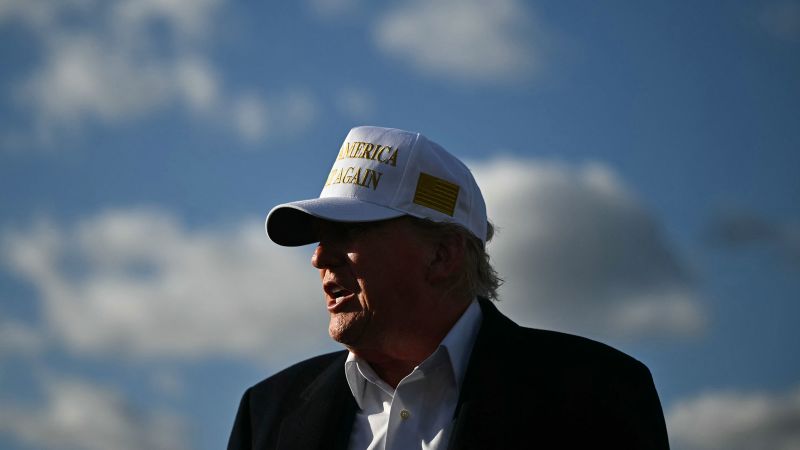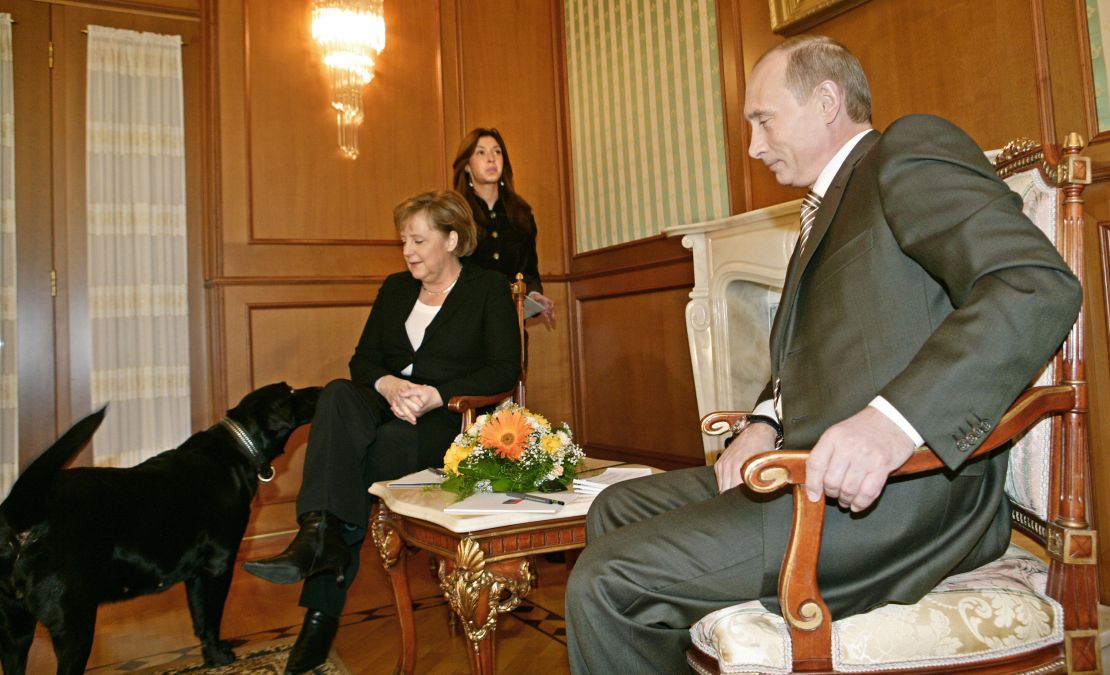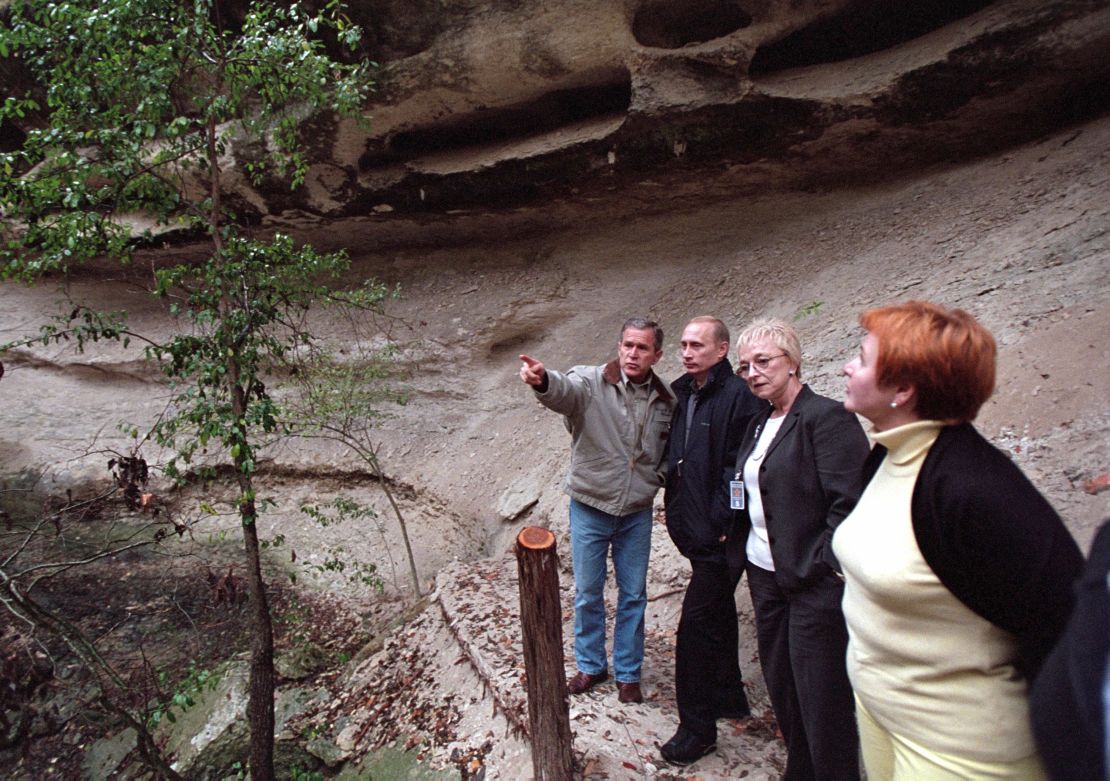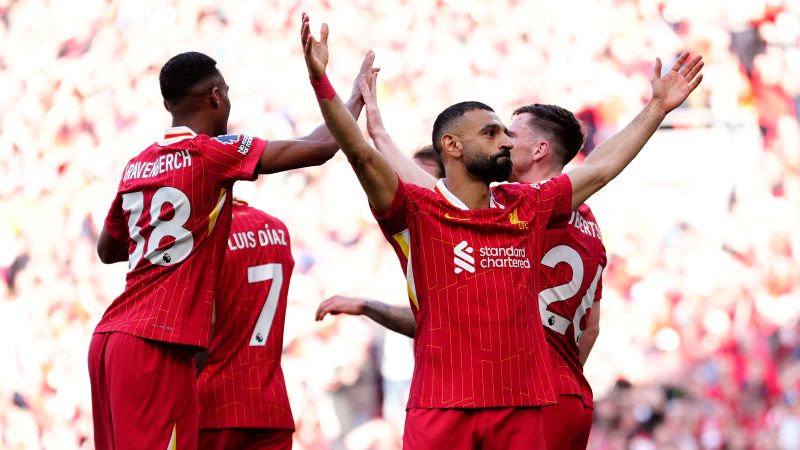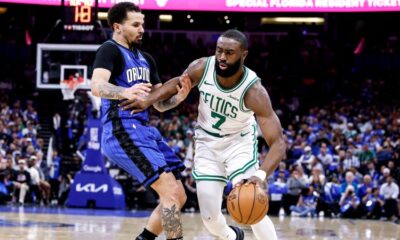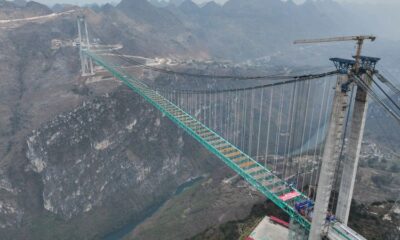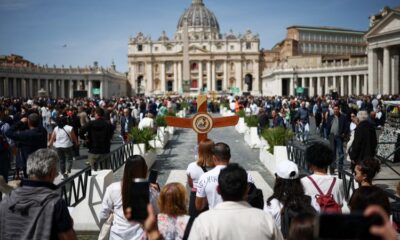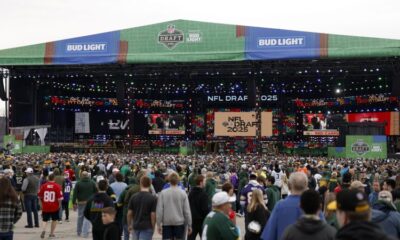CNN
—
US President Donald Trump is finding out that getting through to Russian President Vladimir Putin is not as easy as he might have thought. But he’s only the latest US leader to fail at an attempt to get Russia and its longtime president on board.
The Trump administration’s attempts to reach a ceasefire agreement in Ukraine have largely stalled, despite a flurry of diplomatic activity.
Since returning to the White House, Trump has held at least two lengthy phone calls with Putin and has repeatedly sent his envoy Steve Witkoff to meet the Russian leader in person in Moscow, with the latest trip on Friday.
Unsurprisingly to many Kremlin-watchers, none of these meetings have led to an agreement. Not only did Witkoff come back empty-handed, he also repeated several key Kremlin talking points.
The latest US proposal includes recognizing Russian control of Crimea – a long-standing red line for Ukraine and its European allies, officials familiar with the details have told CNN.
“I would say the negotiations are going very well — from Putin’s point of view,” Angela Stent, a foreign policy expert and former national intelligence officer for Russia and Eurasia at the National Intelligence Council, told CNN.
“He has no intention of stopping the war, but what he wants, and what he’s getting, is a restoration of US-Russian diplomatic relations.”
“Putin is playing a waiting game because he believes that time is on his side and that he can force Ukraine into a more disadvantageous position and persuade Kyiv and its European allies with the help of Washington that there is no alternative to a peace settlement on Russian terms,” John Lough, the head of foreign policy at New Eurasian Strategies Centre, a think tank based in London and Washington, told CNN.
Stalling, haggling over every detail, or saying no without explicitly saying “no” is a classic Russian tactic, employed by Putin and his top negotiators on several occasions in the past, such as during the negotiations for a ceasefire in Syria.
It’s unclear whether the Trump administration didn’t see it coming because it doesn’t have the expertise that would have led it to expect such behavior, or if it has simply decided to play along.
Trump’s words since coming back into office indicate that he sees the world in a similar way to Putin, Stent said – as consisting of a handful of great powers to whom smaller countries should submit.
“Trump talks about great power competition (between China and the US), that he should be able to take over Canada and Greenland, and Panama, and from Putin’s point of view, that’s okay. Remember, he hasn’t criticized Trump for any of these things,” she said.
Ultimately, Trump has made it clear that he has little interest in the future of Ukraine – even suggesting Ukraine “might be Russia someday.”
So, if Putin continues to drag the process along, it may give Trump a way out.
Lough said that Putin’s KGB training has shaped the way he approaches negotiations.
“Putin famously described his job in the KGB as ‘work with people.’ He was trained in the art of manipulating interlocutors. He is known to prepare meticulously for negotiations and is a master of detail,” Lough told CNN, adding that the Russian leader is known to be “quick on his feet and can charm and intimidate in the same breath.”
Putin has employed this technique on Trump in the past, according to Kalina Zhekova, an associate professor at University College London (UCL) who specializes in Russian foreign policy.
When the two met in Helsinki in 2018, the Russian leader handed Trump a ball from the 2018 World Cup during the news conference, saying “now the ball is in your court,” in reference to efforts to improve the strained US-Russia relationship.
“This was indicative of Putin’s calculated ‘tit-for-tat’ approach that views diplomacy as a game with winners and losers. He was also likely aware that his counterpart is someone with a fragile ego who is easily impressed by theatrical gestures and gifts,” Zhekova said, adding that the summit was widely seen as a win for Putin, because Trump was reluctant to denounce Moscow’s interference in the 2016 US presidential election, contradicting US intelligence reports and effectively siding with the Kremlin.
Putin has many tricks in his diplomatic toolbox. He likes to keep his counterparts waiting by turning up late for meetings – sometimes by several hours. He often creates chaotic situations to get more options and can change his mind when it suits him, which makes it even more difficult to negotiate with him.
He is also known to use other ways to assert his power. In 2007, for example, “Putin allowed his Labrador to approach (German Chancellor) Merkel during a photo opportunity, although her fear of dogs was communicated to Russian officials prior to the meeting,” Zhekova said.
Witkoff, a real estate magnate with zero previous experience in politics or diplomacy, has been trying to strike a deal with a former KGB lieutenant colonel who has outlasted five US presidents, eight UK prime ministers, three Chinese leaders and six NATO chiefs, having personally negotiated with many of them.
Stent pointed to the fact that Gen. Keith Kellogg, officially Trump’s special envoy for Ukraine and Russia, has been largely sidelined in the talks with Russia, despite, she said, having the most relevant experience. “Of course, he’s a general, he’s not a diplomat, but at least he has some experience with Russia and thinking about these things, but of course, he’s only dealing with Ukraine.”
The mismatch in expertise extends beyond Witkoff to the rest of the US negotiating team too.
Instead of Kellogg, Witkoff was accompanied on some of his trips by Secretary of State Marco Rubio and national security adviser Mike Waltz. Both are experienced politicians but have no proven track record when it comes to Russia.
Meanwhile, the Russian delegation included longtime Foreign Minister Sergei Lavrov, the former ambassador to Washington, Yuri Ushakov, and Kirill Dimitriev, the head of Russia’s sovereign wealth fund who studied at Stanford and Harvard. All three speak fluent English and are experienced diplomats who know how to deal with Americans.
Moscow might be dragging its feet in hopes that Trump will lose his patience and abandon his goal of ending the war.
Signs of that are already emerging: Rubio said last week that the US could walk away within “days” if there are no signs of progress. And CNN reported this week that Trump is getting frustrated with the lack of progress and privately told advisers that mediating a deal has been more difficult than he anticipated.
“(The Trump administration) are eager to have a deal, but unwilling to pay a high cost for that deal – so no US security guarantees, no boots on the ground (and) they’re unwilling to surge US aid to Ukraine as a stick to try to get Russia to make concessions,” said Jennifer Kavanagh, the director of military analysis at Defense Priorities, a think tank that advocates for more restrained US foreign policy.
She added that, for Trump, getting the US out of Ukraine and stabilizing relations with Russia are more important than achieving peace.
Putin knows this. Russia’s launch of several major attacks against Ukraine over the past few weeks, including on Kyiv, indicates the Kremlin’s belief that the leverage US has – or is willing to use – is limited.
Trump, of course, is not the first US president to believe he can build a good relationship with Russia.
“Every US administration in my memory has come in with some idea that they’re going to reset – they all use that word – the relationship with Russia, that they have an opportunity to turn the page and start again. And they have always been wrong,” Sam Greene, director for Democratic Resilience at the Center for European Policy Analysis, told CNN.
Greene, who is also a professor of Russian politics at King’s College London, said that this succession of failures has meant that Moscow “has come to see the United States as fundamentally inconsistent.”
Some former presidents tried to build personal relationships with Putin – George W. Bush invited the Russian leader to his ranch in Crawford, Texas, where he drove him around in a Ford pickup truck. Bush famously wrote later that he “looked the man in the eye” and “was able to get a sense of his soul.”
But while Putin was initially agreeable to cooperating with the Bush administration, being the first world leader to call Bush after the 9/11 attacks, their relationship soured fairly quickly.
“I think the real reason for the collapse of that reset was because Putin wanted the United States to treat Russia as an equal and to recognize that it has a right to a sphere of influence in the post-Soviet states. And that’s not what the Bush administration was prepared to do,” Stent said.
Other US administrations have tried a different approach, attempting to get Russia more interested in cooperation by welcoming the country into global institutions – such as the G7 in 1997 during Bill Clinton’s presidency, or the World Trade Organization (WTO) in 2012 under the Obama administration.
“And that hasn’t worked either, largely because both sides, over time, underestimated the depth of the structural disconnect between the West and where Russia was headed,” Greene said.
America’s relationship with Russia did somewhat ease under the Obama administration – but mostly because Putin wasn’t officially in the top seat for some of that time. He stepped down in 2008 to become prime minister because of term limits. He returned as president in 2012 and has since changed the constitution.
The key problem, experts say, is that the US and Russia simply do not understand each other – now or in decades past.
“I don’t think that most US administrations have understood really the depth of Russia’s shift towards not just authoritarianism, but to a brand of authoritarianism that sees the existence of Western power and particularly sort of the unity of the transatlantic relationship as deeply threatening to Russia’s interests,” Greene said.
Thomas Graham, a distinguished fellow at the Council on Foreign Relations who was the senior director for Russia on the National Security Council staff from 2004 to 2007, said that the key mistake American presidents made after the breakup of the Soviet Union was thinking that it was possible to develop a broad strategic partnership with Russia.
“I would argue that given Russian interest, given Russian history and Russian traditions, that was never really on the cards. And so we tended to exaggerate the possibilities for cooperation, and then were deeply disappointed when we didn’t get it,” he told CNN.
Graham, who served as a special assistant to Bush, said that the only way forward is to understand that Russia and the US will always have a complex, competitive relationship.
“It’s important to remember that there are different ways of rivalry. We could have the type of very profound adversarial relationship that we have at this point, with, I would say, an unacceptably high risk of military confrontation between Russia and the United States … or we could have something that I like to call competitive coexistence, where the competition is largely in an economic, commercial, cultural, ideological, diplomatic realm, and not so much in the military realm,” he said.
The point, Graham and others say, is that Russia will not disappear. It will continue to exist and have an interest in European security, in Ukraine and in competing with the Western world.



